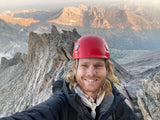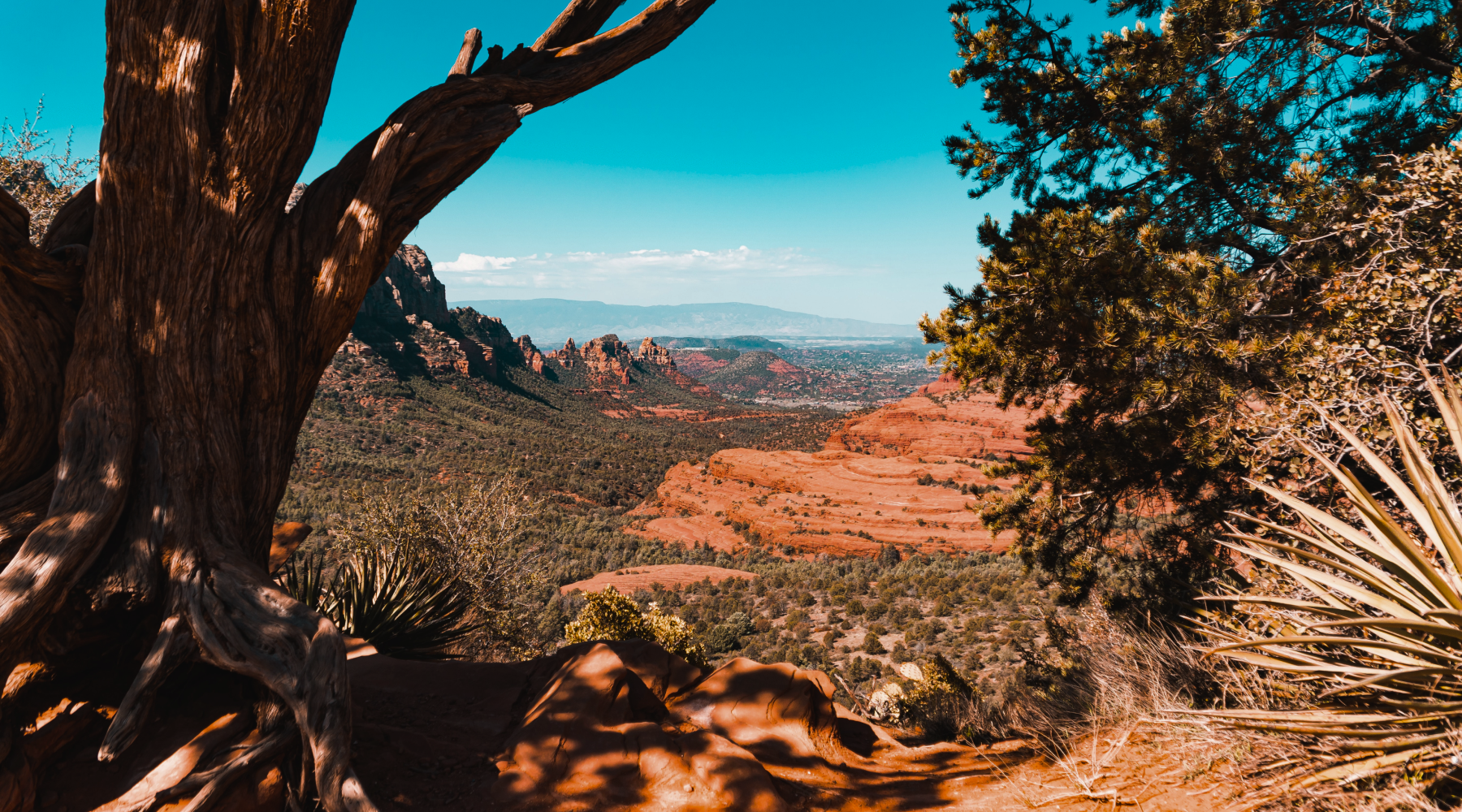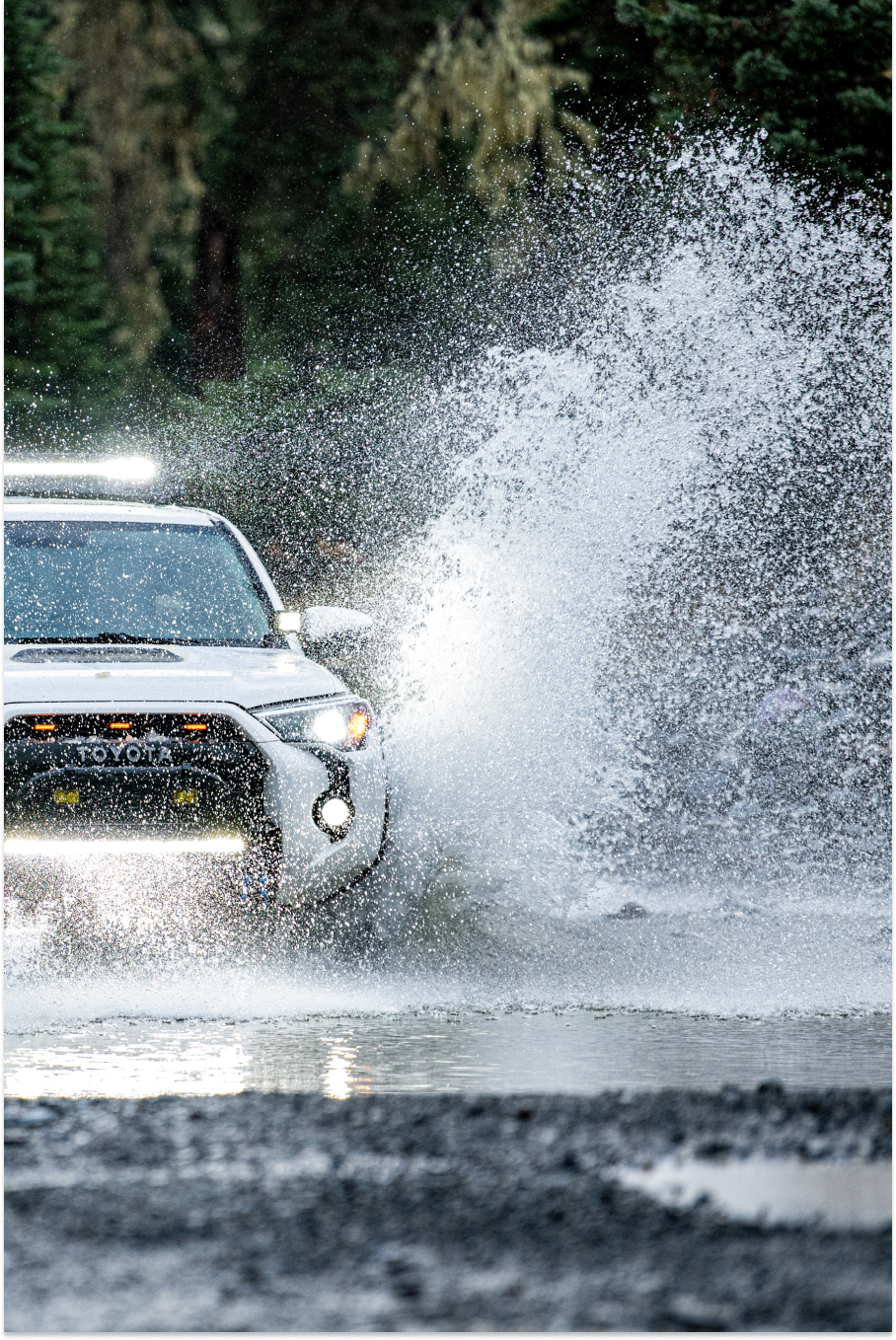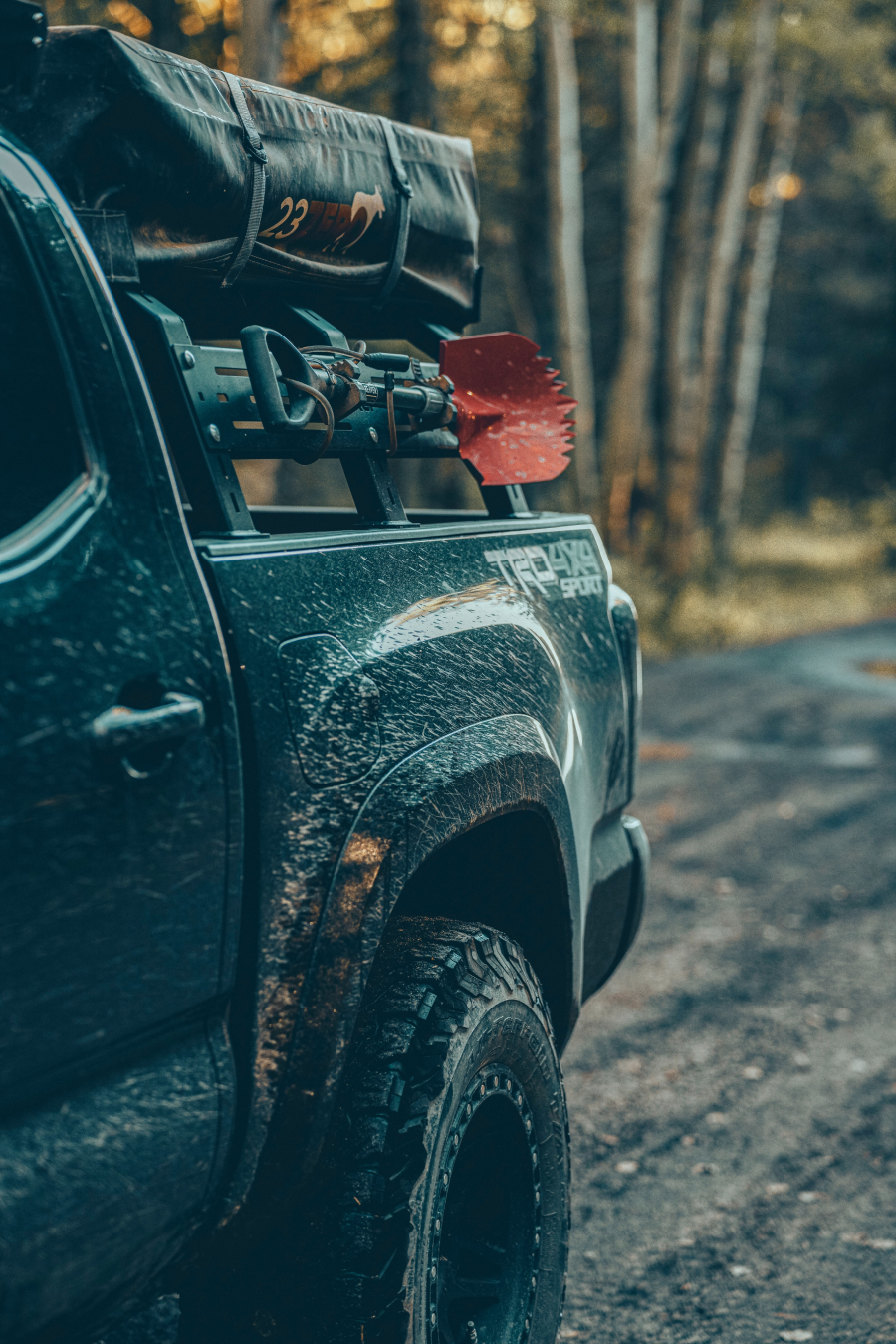5 Best Free Camping Spots in Sedona, Arizona
Learn where to pitch your tent, current regulations, insider tips, and more. Let’s dive into all you need to know about free camping near Sedona.
Sedona is one of the jewels of the Southwest, a quirky little Arizona town surrounded by colorful red sandstone buttes, rugged canyons, and sprawling pine forests. Sedona has long been known for its natural splendor, attracting outdoor enthusiasts for decades. However, the town has also become well-known around the world as a New Age, artsy hub, with tourists flocking from near and far for ayahuasca and peyote ceremonies, yoga and meditation retreats, sound baths, and other healing arts experiences.
With all that popularity, of course, come a few downsides. One is that the options for free dispersed camping around Sedona are much more limited than in years past. Many areas in the surrounding region have banned camping altogether. Others—like the popular Loy Butte Road (FR 525)—have restricted free camping to designated sites.
While this is unfortunate for humans, it’s probably a good thing for the land itself, and the flora and fauna that live on it. Most of these changes to free camping came about not simply because of popularity, but because of poor stewardship—things like untended campfires, littering, overstaying camping limits, and failure to properly dispose of human waste.
Don’t worry though, there are still plenty of options for free camping around Sedona, both in designated campsites and dispersed wilderness reasons. But as you enjoy the free camping options that remain in this pristine desert wilderness, be respectful. It’s up to us to be good stewards of the land. Let’s talk about a few things you should keep in mind before you head out.
What to Know Before You Go
Per the U.S. Forest Service, there are a few areas around Sedona that are currently closed to dispersed camping. These are Stage Stop, Mormon Crossing/Springs, the Fossil Creek Area, and the FR237 and Kelly Pocket Area. Updated information can be found on the U.S. Forest’s Service Coconino National Forest page.
With the exception of these sites and the Red Rock Ranger District—which allows camping only in designated and developed campsites—you can camp anywhere within Coconino National Forest (unless otherwise posted) according to the guidelines found on this U.S. Forest Service flier. Remember, restrictions for dispersed camping change regularly, and those noted in this article may not be up to date.
You can also discover a bit more about camping options specifically in Red Rock Ranger District by perusing this map, which shows all trails, campgrounds, and day-use recreation sites in the region, as well as the area (outlined in green) that is closed to all camping except in designated campgrounds.
What to See and Do When Camping in Sedona
Hiking
There’s nothing better than hiking in Sedona. The trails here are simply jaw-dropping, and range from notoriously rugged to mellow enough for all ages.
A few of our favorite short hikes that everyone should do are Bell Rock (1 mi) which takes intrepid scramblers up to the top of a freestanding rock formation, Cathedral Rock (1.2 mi) which lets you access a sublime saddle nestled between two massive sandstone spires, and Devil’s Bridge (4 mi), which takes you out to a freestanding rock bridge deep in the canyonlands backcountry. These hikes begin from eponymous trailheads (Bell Rock Trailhead, Cathedral Rock Trailhead, and Devils Bridge Trailhead.)
For more information, try the City of Sedona’s Trails, Hiking, and Biking page.
Biking
Mountain biking in the desert Southwest is second to none, and Sedona is no exception to that rule. Three of our favorite mountain biking trails are Hangover, a professional trail with tremendous exposure along an airy saddle, Mescal, which gives you stellar vistas from Courthouse Butte and tracks over tremendous slickrock, and Bell Rock (the hike mentioned above). Hangover is accessible from the Munds Wagon Trailhead east of town, and Mescal is accessible from the Mescal Trailhead.
Of course, you don’t have to head outside of town to have some two-wheeled fun. You can’t miss the Sedona Bike Park, which offers a Tot Loop, Pump Park, Flow Trail, Tech Flow Trail, Bump Jump Trail, and a Dual Slalom track.
Climbing
Sedona is an amazing place for rock climbing, particularly for those with the gear and know-how to climb traditionally. The region is rife with sandstone spires and towers, and tremendous multipitch routes. There are over 500 total routes here, and 80% are trad, so make sure you bring a rack! You can learn more about climbing in the Sedona area on MountainProject. Also, do not climb on wet sandstone, as it is quite porous and easily damaged.
Rafting
Rafting or kayaking the Verde and Colorado Rivers near Sedona is another excellent way to experience the natural splendor of this region. There are a number of operators in town, and unless you have experience, it’s best to go with a qualified guide. Follow this map for the Verde, which contains mostly Class III rapids but a few IV sections. A few recommended outfitters are Great Venture Tours and Sedona Adventure Tours, the latter based out of Cottonwood.
Now that we’ve gone through everything you can get up to around Sedona, let’s talk about a few of the best spots to camp for free!
1. Loy Butte Road (FR525)
GPS: 34.865956, -111.906091
Cell Service: MODERATE (Verizon, AT&T, T-Mobile)
There are eight free, marked campsites inside the Red Rock Ranger District just west of Sedona, offering a combined 200 campsites. You can reach these sites in under 30 minutes from the center of town. From north to south, these sites are Nolan, Greasy Spoon, Cockscomb, Windmill, Surprise, Javelina, Rockview, and Angel Valley. The first five of these sites are directly along Forest Road 525 (Loy Butte), and the other three are further south (see Angel Valley, below).
The road itself is well-maintained, and even 2WD sedans shouldn’t have a problem. RVs and trailers, however, should target Surprise or Windmill, the two closest sites to the main road. For a map of all these sites, including those along Angel Valley Road, follow the link. All free designated campsites are marked and first-come, first-serve. Campers can stay here for up to 14 consecutive days in a 30-day period.
2. Schnebly Hill Road
GPS: 34.891306, -111.677000
Cell Service: MODERATE (Verizon), POOR (AT&T)
Accessible both from I-17 from the west and by going east from Sedona (with a 4WD vehicle) Schnebly Hill Road (FR153) is one of the most beautiful places to camp in the Sedona area, with some seriously impressive views of the surrounding desert country. The road begins right out of town to the east (five minute drive), but unless you have 4WD and/or higher clearance, you may want to come in from I-17.
In general, the entire Schnebly Hill Road is quite rough throughout, though early portions do offer some campsites that can be reached by RVs and trailers. There are campsites for up to six miles along the road. Camping is restricted after the vista point, and high-clearance and 4WD are required beyond then anyway.
3. Angel Valley Road
GPS: 34.812056, -111.893833
Cell Service: POOR (AT&T, Verizon)
Also known as FR89B, Angel Valley Road runs east/southeast of Loy Butte, and offers two free campsites: Javelina and Angel Valley. Like the other campsites in the Red Rock Ranger District, you can stay here for up to 14 consecutive days in a 30-day period.
Be careful, though, Angel Valley Road is much rougher than Loy Butte. If you are driving a vehicle with low clearance, or an RV/trailer, avoid the Angel Valley sites and stick to those around Javelina.
4. Pumphouse Wash
GPS: 35.057944, -111.721583
Cell Service: STRONG (Verizon, T-Mobile, AT&T)
Pumphouse Wash is no further afield than Loy Butte and Angel Valley (25 minutes north of Sedona), and the sites here can’t be beaten, with dozens of forested sites all along FR237. In total, Pumphouse has four campsite loops, each containing between 11 and 26 sites.
These shaded, flat sites—nestled beneath towering ponderosa pines—are at a much higher elevation than many others in the area, making Pumphouse a superb summer camping spot, and easy to access for vehicles of all types. Every site at Pumphouse also has a campfire ring. This campsite is closed from mid-October each year.
5. Child’s Dispersed Camping
GPS: 34.348028, -111.697361
Cell Service: MODERATE (Verizon), POOR (T-Mobile, AT&T)
Nestled below the remnants of the old Childs Power Plant along the edge of the Verde River are 15 to 20 dispersed campsites. You can stay here for free, first-come, first-serve all year long, though you won’t find fire rings, picnic tables, or other camp amenities.
Childs isn’t that close to Sedona (in fact, it’s nearly 60 miles south of town), but this site is right on the water, just downstream from the ruins of the famous Verde Hot Springs Resort—where visitors can soak for free, though nudity is prohibited. Childs offers a vault toilet and a five-day stay limit. The road into the campsite is quite rough, and high clearance, 4WD vehicles are strongly recommended.
U.S. National Forest Service Reccomendations
The U.S. Forest Service recommends a few spots around Sedona, as follows:
NORTH: HWY 89A north of Oak Creek Vista to the west FR535 is a designated camping corridor for dispersed camping. To the east FR237 has site-specific designated camping areas.
SOUTH: FR121, FR689, FR214, FR215, FR618 more than 1 mile south of Beaver Creek Campground. All have designated dispersed camping corridors Horses/ Trailers Bruce Brockett Trailhead from FR618.
EAST: Weather/road closures permitting) Schnebly Hill Road (FR153) East of the Schnebly Hill Vista is a designated camping corridor. Look for the “Camping Permitted” sign.
WEST: Travel 3 miles west of Lower Red Rock loop road on Hwy 89A to Forest Road 525. A designated camping corridor starts approximately 2 mi N. of 89A on FR525 and ends at Boynton Pass Rd (FR152C). All of FR525C is a designated camping corridor.
Frequently Asked Questions
Can you camp anywhere in Sedona?
No. Both overnight camping and campfires are banned within the Sedona city limits. However, free dispersed camping is allowed within much of the surrounding Coconino National Forest, but it is subject to many restrictions. See the above article for more information.
Where to take showers in Sedona?
The Cave Springs Campground in Coconino National Forest is a local boondockers' favorite for showering because they have coin-operated showers with warm water. The campground is approximately 15 minutes north of town on the 89A.
Where can I fill up water in Sedona?
There aren’t many options in Sedona proper (though bottled water is cheap enough at gas stations). The best bet is to head to nearby Cottonwood. Filling up water is free at the Giant gas station on Main Street, but the water isn’t potable. There are also fairgrounds on E. Cherry Street where RVs can dump and fill potable water for $5. Another spot is the Shell gas station off I-17 and Hwy-260 near Camp Verde, which also offers dumping and potable water refills for $5.
Where can I get cheap gas in Sedona?
Gas prices vary, but we’ve found that the ARCO in the center of town (1990 W AZ-89A) usually beats the Speedway, Shell, Conoco, and 76 by $0.04 to $0.10. This is likely the cheapest gas you’ll find in Sedona. In fact, these prices often beat nearby towns like Camp Verde and Cottonwood, too.
Where can you park overnight in Sedona?
Sedona has four all-day free parking lots, but there is no overnight camping allowed within city limits. Your best bet for overnight car camping near Sedona is at one of the five first-come, first-serve campsites off of Loy Butte Road (FR525), Schnebly Hill Road (FR153), or finding dispersed camping within the Coconino National Forest.
Where can I disperse camp near Sedona?
Dispersed camping is available throughout the Coconino National Forest, as long as you adhere to the Forest Service rules and regulations. The two closest designated free sites are Loy Butte and Angel Valley (west) and Schnebly Hill (east). The latter offers the most options, but is more difficult to access, requiring one to navigate a rugged 4WD road for much of the way.
How much does it cost to camp in Sedona?
Paid fees for private campsites in Sedona can range up to several hundred dollars and beyond, and overnight public camping is banned within the city limits. However, there are still a few free campsites in the surrounding area. Read the article above for more info.
Are Sedona trails free?
Most of the public trails around Sedona are free to use, but Red Rock Passes are required to park at most of the popular trailheads. These include Baldwin, Banjo Bill, Bell Rock Vista, Bootlegger, Boynton, Cathedral Rock, Courthouse Butte, Doe/Bear Mountain, Encinoso, Halfway, Honanki Heritage Site, Huckaby, Jim Thompson, Little Horse, Midgley Bridge, Palatki Heritage Site, V Bar V Heritage Site, and Yavapai Vista.
Red Rock Passes cost $5 for a day, $15 for a week, and $20 for a year. The funds from these passes help maintain trails and preserve wilderness in the area, so it goes towards a good cause. You can avoid purchasing a pass if you already own an America The Beautiful Federal Recreational Lands Pass, or by visiting on fee-free days (Fee-free days can change each year, but in 2023 they are Martin Luther King, Jr. Day, President's Day, National Get Outdoors Day, Juneteenth, National Public Lands Day, and Veterans Day).
Is two nights in Sedona enough?
If you are mostly visiting Sedona for the arts scene, then you can certainly see the city—restaurants, shopping, viewpoints, and scenic drives—in a day or two. However, if you’re coming to hike and explore the outdoors around Sedona, then you likely will want to spend at least four to five days in the area.
About the Author:
 Owen Clarke is an action sports and adventure travel journalist living on the road. His primary focus is rock climbing and mountaineering, but his work appears in over 50 international magazines covering a variety of niches. In addition to vertical sports, he also has a penchant for motorcycles and long-distance trekking.
Owen Clarke is an action sports and adventure travel journalist living on the road. His primary focus is rock climbing and mountaineering, but his work appears in over 50 international magazines covering a variety of niches. In addition to vertical sports, he also has a penchant for motorcycles and long-distance trekking.







